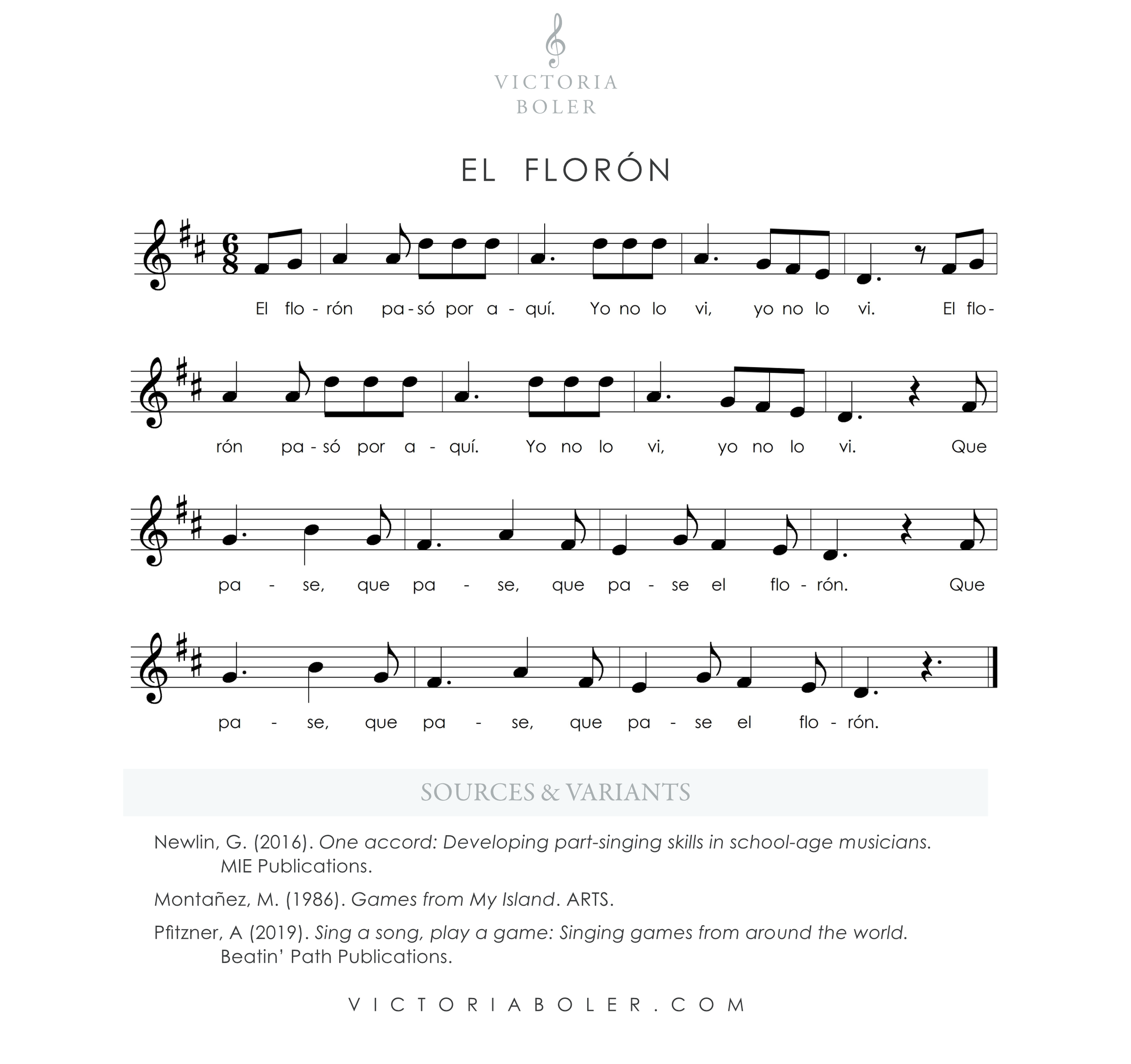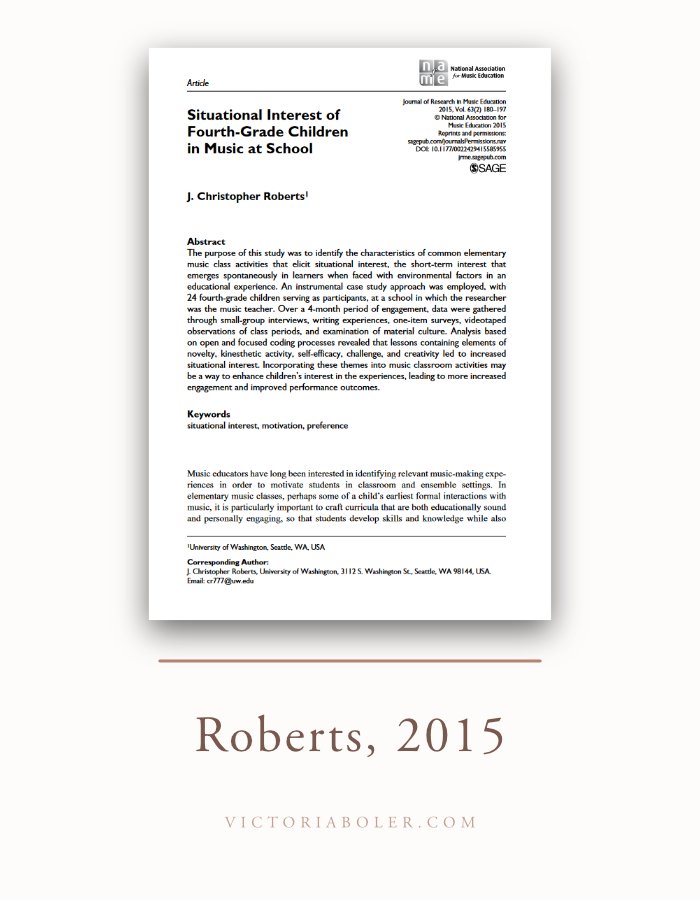Upper Elementary Music Games
Singing games are a beautiful way to increase student participation and teach musical skills in any grade level!
When we choose games for upper elementary students, we can look for engaging and active games that incorporate competition in a student-friendly way.
Let’s look at examples of singing games that upper elementary students love: Deedle Deedle Dumpling, Doña Araña, Vamos a Jugar, El Florón, and Big Fat Biscuit.
Then, we’ll explore two research studies about singing games in upper elementary music. These two studies can help us frame why these games are so important to students in this age group, and they can have implications for the way we approach learning activities for upper elementary students in general.
Let’s sing!
To find these songs, we’ll set our game level to upper elementary and then select the categories:
Chasing / tagging / racing
Elimination
Jumping
Objects
Deedle Deedle Dumpling
This is an old nursery rhyme with two games for chasing, tagging, and racing.
Chasing, Tagging, & Racing Game:
The game is an addition to another song.
Formation: Students take hands to form two concentric circles. A single shoe is on the floor inside the smaller circle, and two students (John 1 and John 2) stand outside the circle.
Directions: Secretly, the teacher chooses two pairs of students to be the doors to the house.
All students sing the song and walk around the circle in opposite directions. At the end, the secret pairs of students raise their hands to create an entry to the middle. Both Johns race to get to the shoe first.
Alternate Game:
Aimee Pfitzner shared a different game in her book, “Sing a Song, Play a Game.”
Formation: Students stand in a circle.
Directions: Students sing as one student walks around the outside. At the end of the song, the person lands behind two people. Those students each take off one shoe and race around the circle in opposite directions. The person who gets back to their place and puts their shoe on first wins.
Listen to Aimee Pfitzner share more about her favorite singing games here
Doña Araña
I love this song for many grade levels, including upper elementary!
You can read about how to use Doña Araña for different grades here.
Chasing, Tagging, & Racing Game:
Formation: Students create a circle (spider web) and connect hands. One student is the fly inside the spider web. One student is the spider outside the spider web.
Directions: Secretly, the teacher chooses a pair of students to create a doorway at the end of the song.
Students sing and walk around the circle with hands connected. At the end of the song, the chosen students raise their hands to create an opening in the circle.
The fly must escape the spider web through the opening and get to the safe zone before being tagged by the spider.
Vamos a Jugar
This clapping elimination game is one of my favorites! It’s so easy to get started, and students love it.
Clapping Elimination Game:
Formation: Students sit in a circle with palms face up. The right hand goes on top of the neighbor’s left hand.
Directions: As the class speaks the rhyme, the steady beat is clapped around the circle. At the end of the rhyme (at the word, “diez”) the person on whom the beat lands is out unless that person pulls their hand away in time.
El Florón
There are several variants of this well-loved song from Puerto Rico and several different versions of the game!
Here’s a version for upper elementary.
Object Passing Game:
Formation: Students stand in a circle.
Directions: Students pass a ball around the circle while singing the song. At the end of the song, the person holding the ball sits down and is out of the game. The rest of the class sings the song again, continuing to pass the ball over the empty spaces left by students who sit down.
To increase the difficulty, students who are seated may reach their hand up to try to swat the ball away from those who are passing (Newlin, 2016).
Big Fat Biscuit
This song from the Sea Islands is a huge hit with upper elementary!
When I introduce the song, I normally begin by having students sing an ostinato as I sing the main song:
Jumping Game:
Formation: Three students line up shoulder-to-shoulder.
Directions: Students sing the song. At each “chew-belew,” students take turns jumping out as far as they can. At the end of the song, the person who has jumped the furthest is the winner.
Why Singing Games?
When we use singing games in upper elementary music, we can increase students’ motivation, engagement, and participation.
Why is that?
Let’s frame our thinking around two studies that may have some implications for our work in upper elementary music: both in how we approach singing games, and how we approach learning activities for this age group in general.
Competitive vs Non-Competitive Singing Games:
In this 2016 study from Christopher Roberts, the researcher wanted to know if 4th grade and 2nd grade students preferred competitive or noncompetitive singing games.
What do you think he found?
Students in this study preferred competitive singing games over non-competitive singing games.
That finding may feel intuitive to us - we may have expected students to prefer competition based on our own experience teaching this age group. However, what may be more interesting is why students said they enjoyed competitive singing games more. And that reason was a kinesthetic activity - the movement piece was the reason students gave for enjoying these games more.
Even for the students who said they preferred the non-competitive singing game, the reason was the same - they liked the movement.
The Importance of Movement:
This was what the same researcher found in this earlier study when he wanted to know when 4th grade students were the most interested in music class.
Here’s a quote from one of the 4th grade participants in the earlier study describing their experience with moving in music class:
“You know, because we’re kids, we like to be active, instead of just sitting there, saying sol-la-do. And you notice how all of us, most of the time, are moving around, not sitting still.”
This researcher also used videos of class as part of the dataset.
Reviewing the videos, one of the things the researcher noticed is that when students were preparing for a concert, there was more off-task behavior - staring into space and not singing, playing with shoelaces, etc. Then when the researcher switched to an active singing game, the engagement level went way up. More students were singing, students seemed to be more focused, and more of the class was engaged.
Movement in Music
What might this research suggest to us as upper elementary music teachers?
Movement is really important to this age group!
When we construct learning activities for upper elementary, we can choose to center movement as one of our teaching strategies. These students are not too old to move in music class - in fact, engaging and active singing games are exactly how many students enjoy spending their time with us.
How to Cite this Post:
Boler, V. (2024, May 9). Singing games for upper elementary. https://www.victoriaboler.com/blog/upper-elementary-singing-games
Research Cited:
Roberts, C. (2015). Situational interest of fourth-grade children in music at school. Journal of Research in Music Education. 63(2). https://doi.org/10.1177/0022429415585955
Roberts, C. (2016). ‘Wanna race?’: Primary student preference for competitive or non-competitive singing games. British Journal of Music Education 33(2).https://doi.org/10.1017/S0265051715000236










